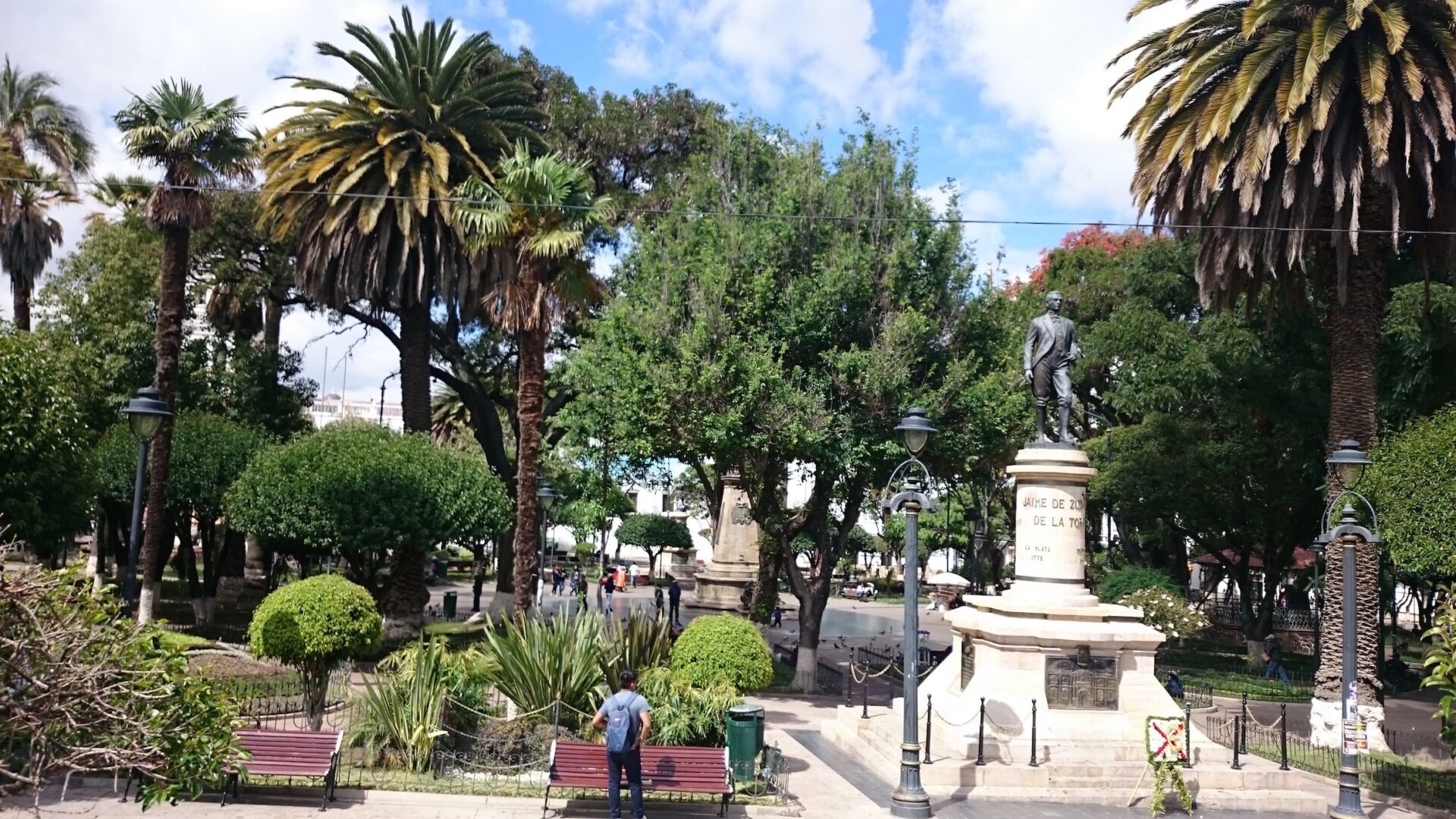Explore Potosi and Sucre in Bolivia
 by Tom Shearman on 6th October, 2017
by Tom Shearman on 6th October, 2017

Explore Bolivia
A holiday in Bolivia is so much more than Uyuni, La Paz, Lake Titicaca and Amazon.
Tom describes two more must-sees in this vibrant and fascinating Andean country – Potosi and Sucre.
He writes…
The Spanish have a phrase – ‘Vale un Potosi’ – which means something being worth as much as Potosi.
The mountain Cerro Potosi was one of the Spanish Empire’s main sources of income, it being the richest silver deposit ever discovered.
After five centuries of plunder, Potosi mountain is still dishing out silver, tin, zinc and most visitors come here to head down the famous mines. *
At 4,000m it’s high in Potosi .The town is pretty bustling most of the time, from markets selling dynamite for the miners to people heading to one of many lavish churches.

Cerro Potosi
Cerro Potosi mountain dominates the skyline, but there is more than this to discover – tales slavery, mule abuse and more.
The Casa de Las Monedas (a private tour is better) was pivotal to the history of the Americas and Spain. Here you can see where the silver and gold was smelted, made into coins and transferred across the seas to line European traders and government pockets.
There are many lavish Catholic churches here, built by the Spaniards in the hope that by praising God, Potosi would keep giving up its riches.
And if you speak Spanish, Potosi’s tales of hard labour and uprisings from a still political workforce can be gleaned from the locals, proud of where they come from but feeling neglected by Bolivia’s powers.
All Saints’ Day (Nov 1) offers a great insight into the local’s culture, with many keen to show you a snapshot of their lives.
The city itself is well connected with Uyuni, Sucre and La Paz, and has a fair few restaurants to choose from.
Sucre
Sucre is also known as the ‘White City’ as all building in the centre are proudly painted white every year.
It is a sophisticated and incredibly pleasant place to stay or explore the countryside from.
This is the constitutional capital of Bolivia and the site of its declaration of independence. The Casa de La Libertad is a must-see, walking among ghosts and relics of the past, including what is claimed to be Argentina’s first flag!
Other unmissable Sucre attractions include its cathedral, the Recoleta area for great views and sunsets, the main market just outside town and its main cemetery – check the opening times, it often closes at lunch time.

Casa de la libertad, Sucre, Bolivia
The shops contain high quality alpaca goods as well as textiles, and on a city
tour you will get the opportunity to buy some.
Sucre has many nice cafes and restaurants, from French to Bolivian to Italian and international, plus vegetarian and the more traditional traveller fare e.g. pizzas and burgers.
For more activity, there are a series of treks to do nearby as well, up in the Cordillera de los Frailes.
You’ll see volcanic craters, dinosaur footprints, waterfalls and amazing rock formations, as well as true Andean villagers living in traditional ways. Tourism is managed in a very community-based manner.
Sucre is well connected by buses (albeit roads can be bumpy) and short 30 minute flights to other main cities in Bolivia such as La Paz and Santa Cruz.
Plan a trip to Bolivia
If you plan to visit Bolivia, contact Andean Trails for help in putting together your ideal tailor made adventure and consider including Sucre and Potosi to your explorations.
(* Note: Andean Trails doesn’t offer the Potosi mine tour due to its instability. Anyone taking the tour does so at own risk.)
Share







